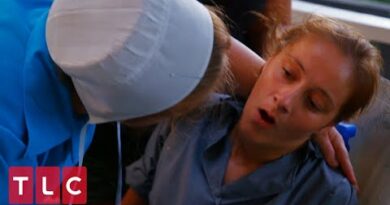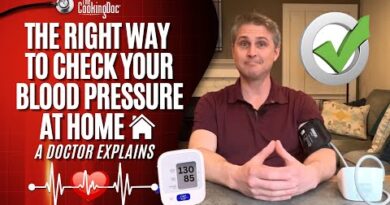Beat the Silent Killer: Effective Strategies for Lowering Blood Pressure and Living Healthily
A thorough education in the treatment of hypertension
Hey there!
The dangers of cardiovascular disease, stroke, and other major health problems are greatly increased in people with hypertension, often known as high blood pressure. Participants will leave this session with the understanding and tools necessary to control their blood pressure on their own. People can improve their health and lifespan by a lot only by switching to a better way of living.
Part 1: Learning About Hypertension
1.1 Hypertension: What Is It?
When blood pressure is persistently excessively high against the arterial walls, a medical condition known as hypertension develops. Its “silent killer” reputation stems from the fact that its effects may go unnoticed until they cause serious harm. In order to effectively manage hypertension, it is essential to understand the condition’s definitions, causes, and types.
1.2 Things to Be Wary of and Challenging
Hypertension can have multiple causes, some of which include heredity, aging, poor nutrition, lack of physical activity, and emotional and mental stress. Developing hypertension is more likely when certain risk factors are present and when they interact with one another, as will be discussed in this subsection. We will also go over the possible side effects, including cardiovascular disease, renal failure, and blindness.
Nutrition and Diet (Section 2)
Part 2.1: The DASH Diet
The DASH diet aims to reduce salt consumption while increasing consumption of entire foods such as fruits, vegetables, whole grains, and lean meats. In this part, we will go over the basics of the DASH diet, which include how to plan your meals and what to look for when you buy.
Methods for Reducing Sodium (2.2)
One of the best strategies to reduce blood pressure is to cut back on salt. In this section, you will learn how to spot processed goods that contain hidden sodium, how to cook with less salt, and what seasonings work best to mask the taste of meals that are high in sodium.
Third Section: Exercise
Section 3.1: Exercise Advice
Managing hypertension requires regular physical activity. People with hypertension should engage in aerobic and resistance training, and this section will outline the kinds and quantities of exercise that are recommended for them.
3.2 Making Physical Activity a Regular Part of Life
Aside from organized workouts, there are several advantages to making physical activity a regular part of one’s life. Taking the stairs, walking during breaks, and participating in active hobbies are a few examples of the practical ways we’ll cover to increase everyday physical activity.
Chapter 4: Dealing with Stress
4.1 Stress and Its Effects: A Comprehensive Overview
One of the risk factors for hypertension is chronic stress. Here we’ll go over the ways in which stress causes high blood pressure by affecting the body physiologically. Attendees will gain insight into the sources of their stress and the significance of taking action to alleviate it.
4.2 Methods for Reducing Stress
Mindfulness, yoga, meditation, and breathing exercises are just a few of the stress management methods covered in this area. We will also go over some practical advice for using these approaches in your everyday life.
Part 5: Tracking and Dosage
5.1 An Autonomous Blood Pressure Monitor
To effectively control hypertension, it is essential to monitor blood pressure regularly. Learn the ins and outs of taking your blood pressure at home, why it’s important to record your results, and how to interpret your results in this section.
5.2 Hypertension Medications: A Comprehensive Overview
A change in diet and exercise routine may not be enough to alleviate symptoms for some people, and medicine may be required. Common antihypertensive drugs, how they work, possible adverse effects, and why it’s important to take them exactly as prescribed are all covered in this section.
In summary
Managing hypertension calls for a comprehensive strategy that include food modifications, more exercise, stress reduction, and medical supervision. Participants can take charge of their health, lower their blood pressure, and avoid hypertension-related consequences by following the tactics presented in this course.
By Dr. Alfred Egedovo, Global Help Center (GHC) Publications
About the author
Dr. Alfred Egedovo is a family physician with an interest in Global Health and health promotion. Chief Medical Director at GHC Hospitals. www.ghchospital.com and www.globalhelpcenters.org Director of GHC Publishing, a subsidiary of Professional Equipment Center Groups Inc.
Before he started writing on health promotion and children’s books. Dr. Alfred got a Doctor of Medicine degree and Postgraduate Certificate in Research Method from James Cook University Australia, with a focus on primary Health care and workplace research. Courses in Master of Public Health and Tropical Medicine, Biostatistics, and Epidemiology and recognized as a scholar with high ranking publications on different techniques of learning laparoscopic surgery.
After that, just to shake things up, he went to the Image-Guided Institute, University of Strasbourg, France, and trained in advanced surgical endoscopy.
Then he did clinical training with some really important people who are way too dignified to be named here. He was a medical missionary for a while. He now writes on Health promotion strategies and reduction of Global surgery gaps in resource-limited regions. Application Artificial Intelligence ( AI) in Poverty reduction and writer on various topics

